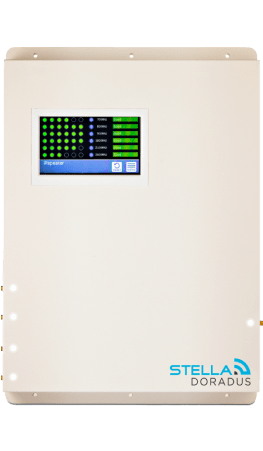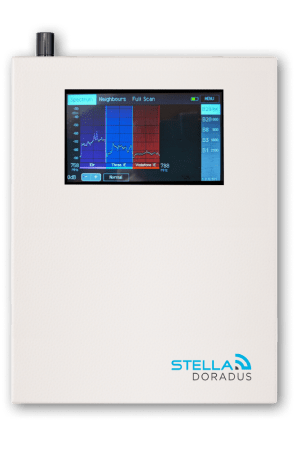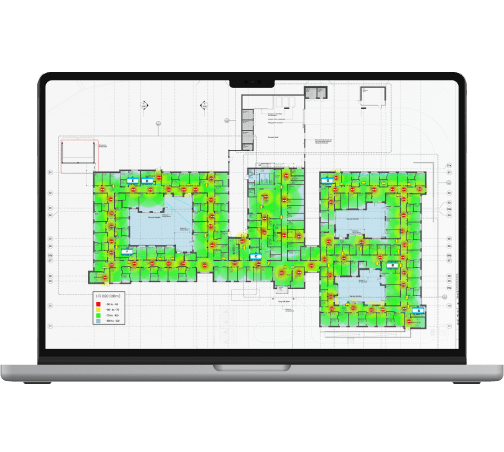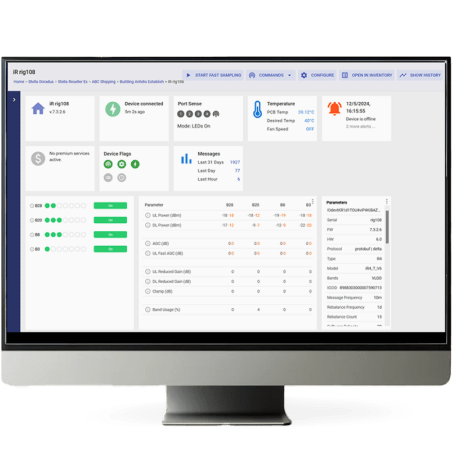How to balance the signal from multiple operators
When installing a DAS repeater system in a big building in a city, it is important to ensure that the signal is “balanced” from all the operators.
Firstly, take a signal measurement on the roof of the building. If you do not have a signal analyzer (image below) , instead, you can use 3 identical phones each with a different network sim in them. In our example we shall call the operators, A, B and C. (see Diagram above)
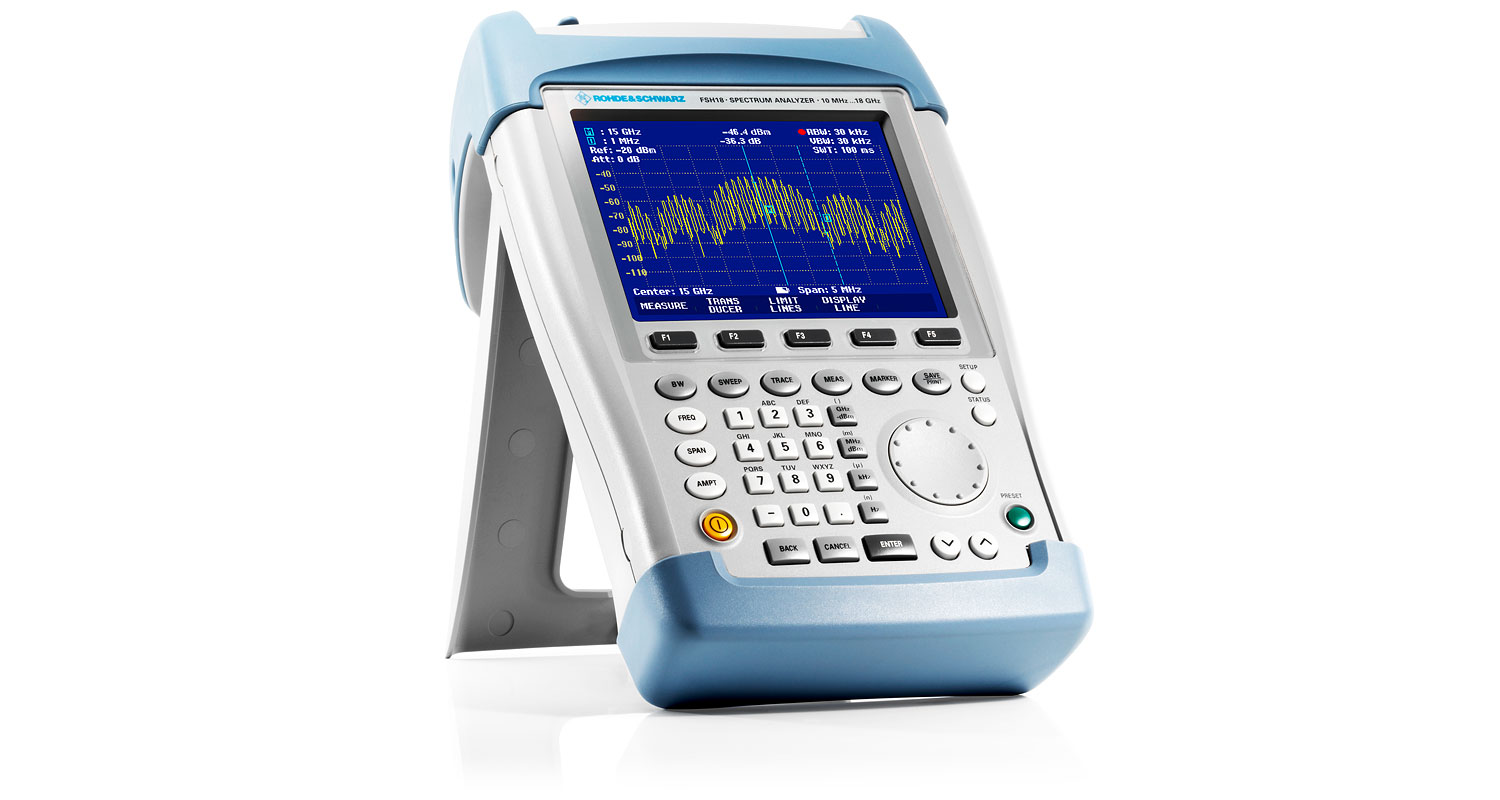
It is typical for the signal of one operator to be stronger then the others. You can see in the diagram that operator C is much stronger then operator A. C is located only 50m from our building whereas A is 1000m. B is somewhere in the middle at 500m. These are big differences in distance and results in big differences in received power also.
In Diagram 1, an Omni-directional antenna receives the signal from all 3 operators and does not favor one operator over the other. The result is that unequal signal is sent to the first repeater in the system. The repeater does not differentiate between each of the operators. All it sees is the most powerful operator, in this case, operator C. If the signal level of operator C is above a the threshold level set in the repeater, the repeater will attenuate the power of operator C to a safe level. The repeater does this to ensure no overpowered signal enters the system.
The drawback to this is that, those weaker operators also get attenuated by the same amount and sometimes this means they are attenuated so much as to be useless.(See image 1, output of repeater)
You can see in diagram 1 that operator A has been wound down to zero. Operator B is wound down very low and only operator C is perfect. This is not a satisfactory result.
So how do we avoid this?
Take a look at diagram 2 above.
In this situation, we use a Yagi directional antenna instead of the omni used in diagram 1. A Yagi antenna can focus its power in one direction whilst reducing it elsewhere. By placing the Yagi strategically on the roof, in this case behind a big wall to block out the most powerful operator C and pointing it towards operator A, we can balance the 3 operators more effectively. Even though the signal being sent to the repeater is a bit overpowered, this is no problem, the repeater can attenuate it a little to reach the safe level. The main point is that the signal from each operator is roughly balanced. The repeater will then distribute this balanced signal through out the building.


